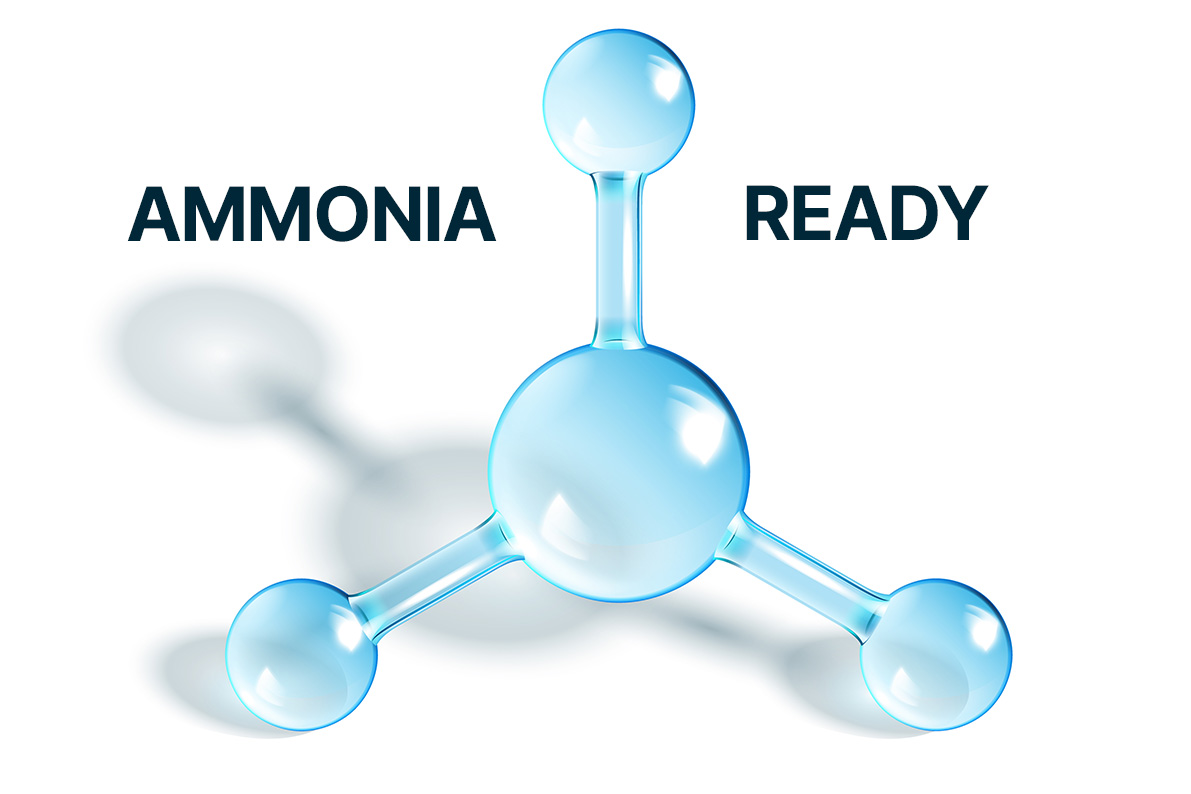The optimal solution for every challenge
Ammonia requires special material
To ensure safe applications with wet ammonia, stainless steel is the first choice for our valves, as they are not attacked by this media. An exception to this, are gas mixtures of ammonia and carbon dioxide. Bronze and brass valves, on the other hand, should only be used for absolutely dry ammonia, as copper and copper alloys react corrosively with even the slightest trace of moisture in combination with ammonia.
Our solutions for your application:
- Dry ammonia: bronze and brass valves
- Wet ammonia: full stainless steel valves
We have developed upgrade kits for our globe valves. This means that we not only offer the direct installation of ammonia ready valves within an ammonia fuelling system, but also enable our customers to upgrade valves that have already been installed.
Possible ways to your ammonia valve::
- New valves for LNG projects & future ammonia upgrade possible
- Installed valves for LNG use ⟶ Upgrade to ammonia use with our upgrade kit
- Ammonia ready products for new projects
Ammonia is an important element for decarbonisation. I'm proud that HEROSE is offering suitable valve solutions for this as well.
(Ralf Dankert-Paulsen, Area Sales Manager)
The production of ammonia

The production of ammonia is a key process in industrial chemistry. Renewable energy is generated with the help of solar and wind power. Hydrogen is then produced by electrolysis and nitrogen can be obtained from an air separation unit. Hydrogen (H2) and nitrogen (N2) are stored in tanks. Ammonia is produced using the Haber Bosch process, which is the most commonly used method. Ammonia can be stored either at 1 bar and -33 °C or at 9 bar and 20 °C in liquid form.
Do you already know our webinar on ammonia as a marine fuel? Have a look here (external Link to HEROSE Youtube channel). Or read more about our valve installed in an ammonia fuel supply system here.
AMMONIA AT A GLANCE
What exactly is ammonia?
The colourless gas is distinguished by its characteristic smell. An ammonia molecule consists of one nitrogen atom (N) and three hydrogen atoms (H). The chemical formula is NH3. The formation of ammonia is a good example of an exothermic reaction. This means a reaction that releases energy in the form of heat. Gaseous ammonia is formed from gaseous nitrogen and hydrogen.
The history of ammonia
Ammonia has been used as an energy storage medium and fuel for many years, for the trams in New Orleans, for example, running on this energy source. There are activities worldwide to establish ammonia as a green fuel. Green ammonia is produced with the help of electricity from wind and photovoltaic systems. Liquid ammonia can be converted into electrical energy in an NH3 fuel cell or burned in an engine.

